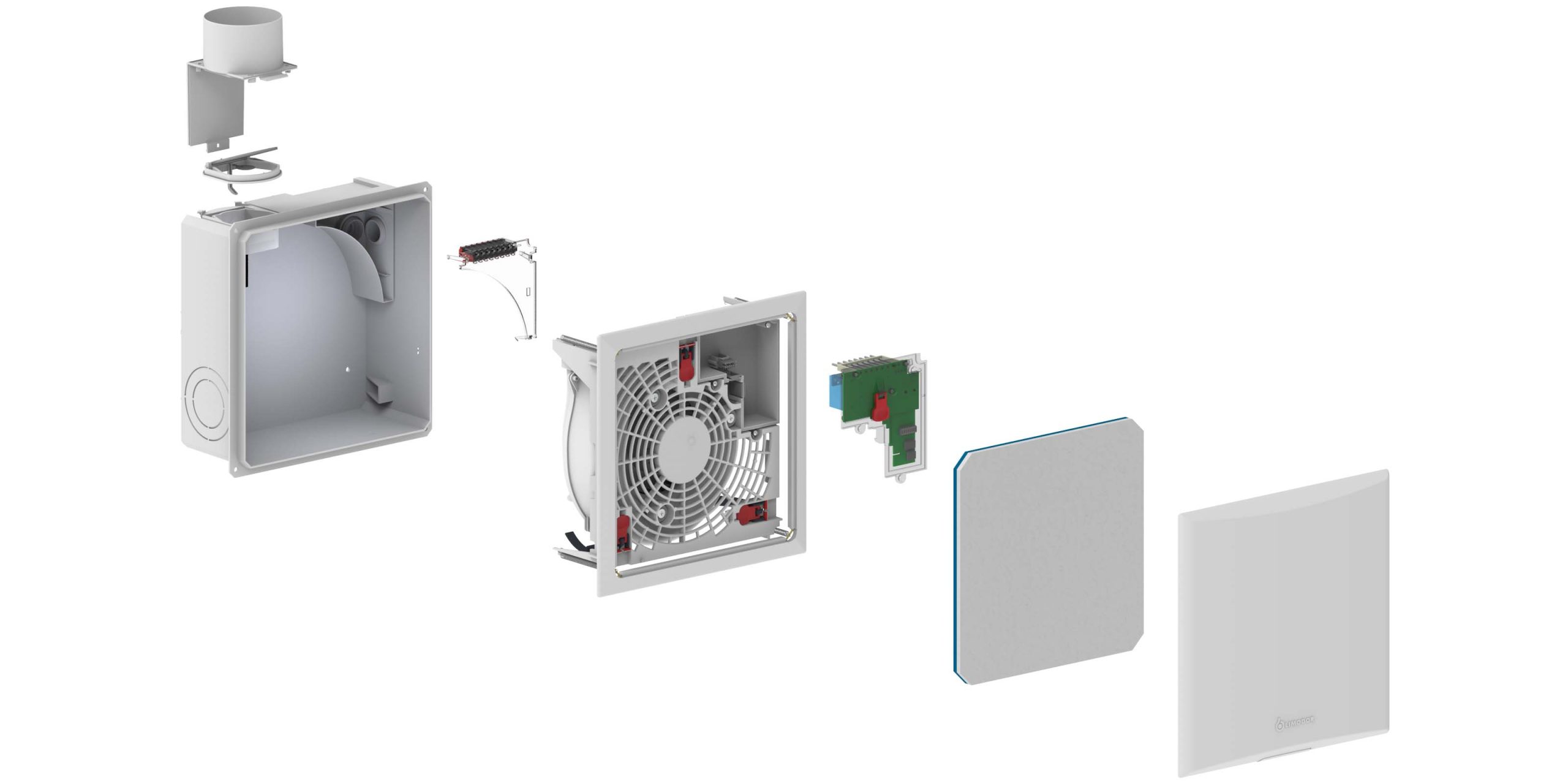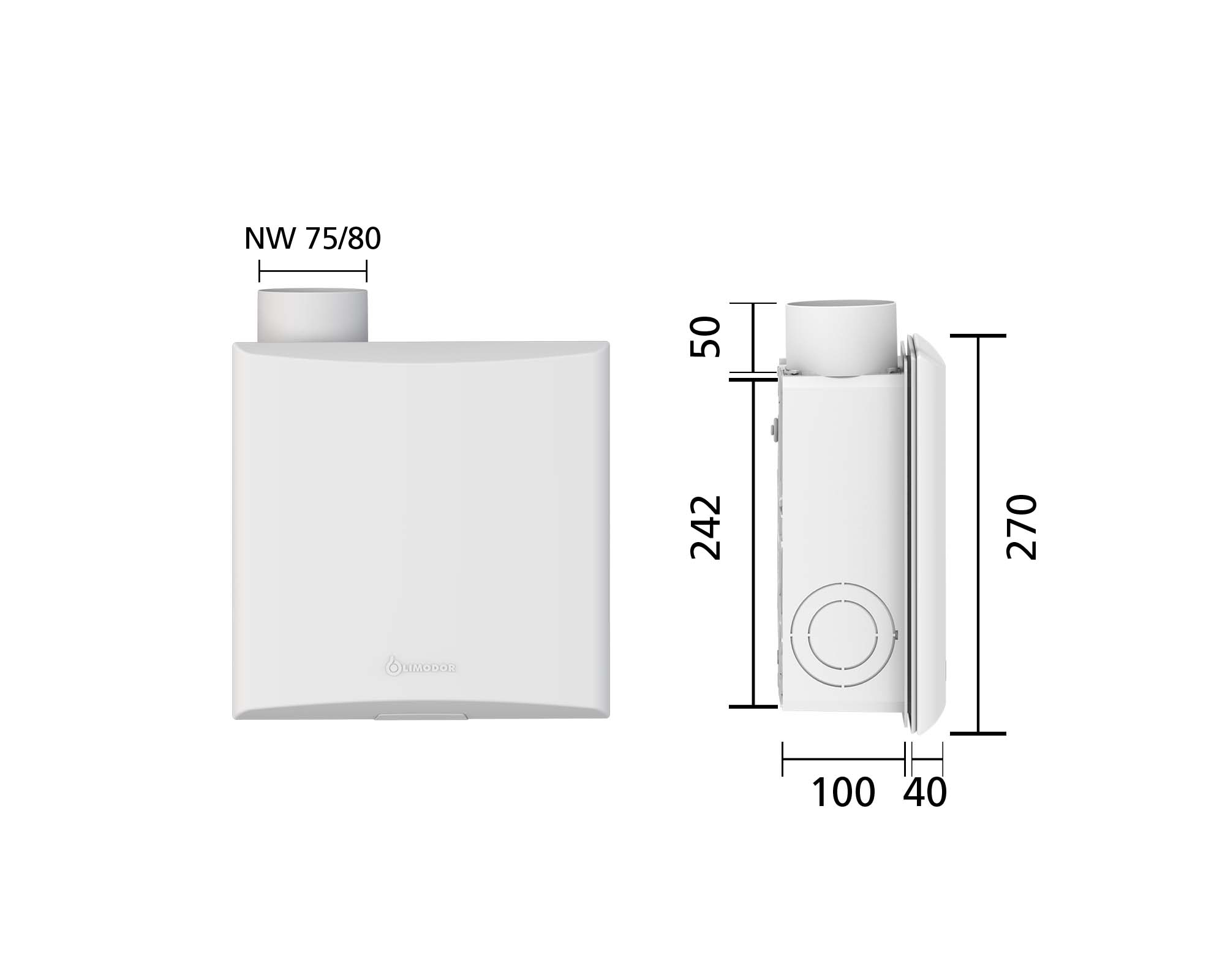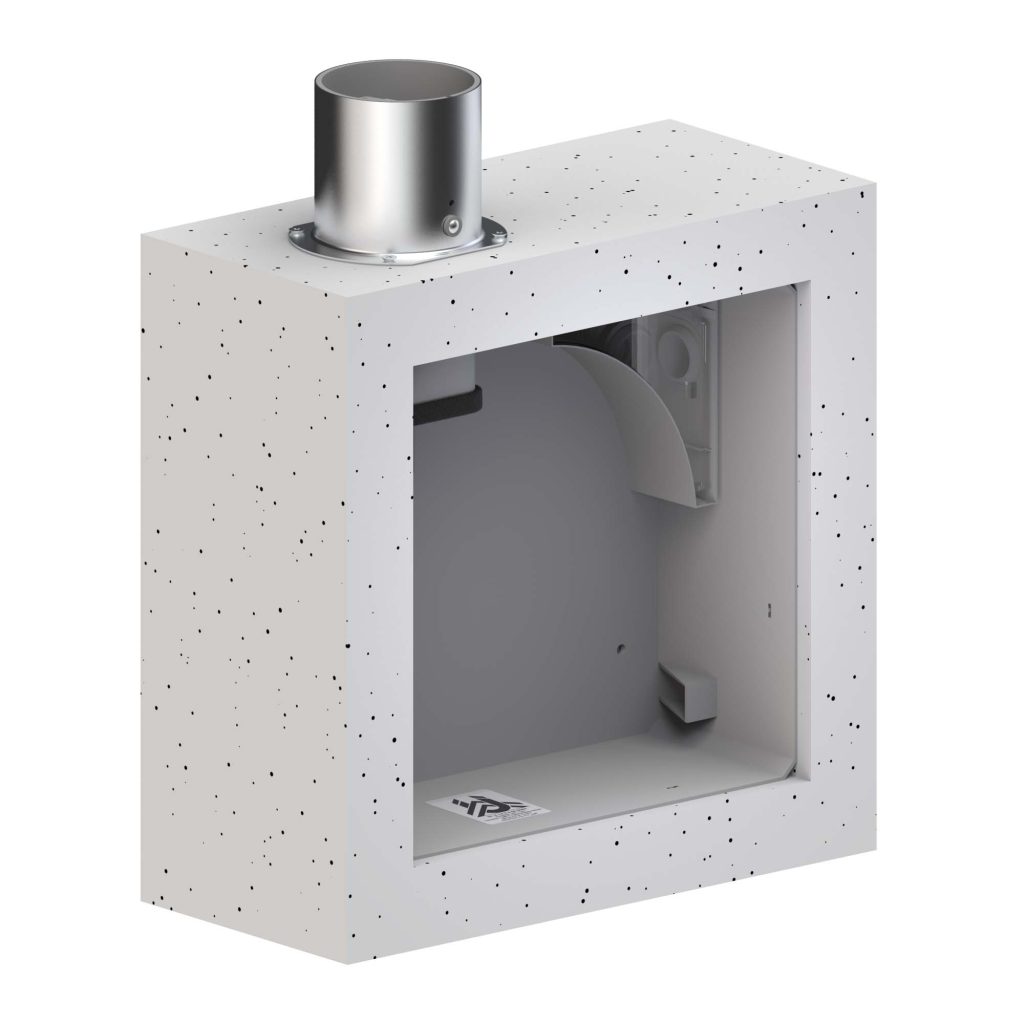LIMODOR F/M
Das Einrohrlüftungssystem LIMODOR F/M besticht durch seine vielfältigen Anwendungsmöglichkeiten und die große Montagezeiteinsparung bei der Komplettierung. Der Lüfter ist in unzähligen Varianten konfigurierbar und kann mit Zeitsteuerung, Feuchtesteuerung, Bewegungssteuerung oder einfach über den Lichtschalter aktiviert werden. Der LIMODOR F/M wird wahlweise in Wand oder Decke als Auf- oder Unterputzvariante eingebaut. Das Gehäuse ist mit einem Ausblasstutzen links oben bzw. hinten erhältlich. Der gefederte und mit dem Lüftereinsatz eine Einheit bildende Abdeckrahmen (Gehäusedeckel) überbrückt Einbautiefen bis zu 80mm und wird ohne Werkzeug montiert. Mit dem Gebläseeinsatz LIMODOR F/M-EC können bestehende LIMODOR F/M Lüftungsanlagen einfach und komfortabel zum hocheffizienten Energiesparlüfter aufgerüstet werden.
Das Gerät ist für den Einbau in Lüftungsschächten mit einer zusätzlichen Brandschutzummantelung (F90) verfügbar. Für Lüftungsschächte mit gemischter Belegung ist das Gehäuse mit einer Brandschutzummantelung (F90) und einer zusätzlichen Brandschutzklappe (FLI-VE) bzw. einer zusätzlichen Brandschutzmanschette (FLI) erhältlich.



